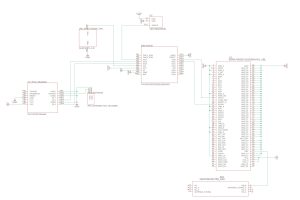The most significant risk to our project’s success remains consistent with our previous reports. Additionally, the complexity and depth of our project, with its many moving parts, present a substantial challenge. In order to successfully navigate this it will require a high level of dedication and effort from the team to bring our invention to life. One of the biggest issues holding us back thus far was not having all our parts figured out. While creating the design report we were able to finalize our parts list and get them ordered. We are still in budget with these changes. Now with this done, we can start to work on our PCB design to get that finished and ordered as well while we work on the parts individually in the meantime.
After thoroughly reviewing our materials, we have implemented some changes to the system’s overall design. The block diagram was modified after feedback from the design review in order to make our flow more understandable and have a clear logical flow on how different parts of the product come into play with each other.
Liv was also able to write the bluetooth code for communication between the ESP32 and mobile app which works for communication in both direction. We have also created a github to consolidate all our work into one location. Our next topic we need to discuss as a team is how data gets serialized between the phone and pendant (in both directions)
The schedule in the design report is still current.
A was written by Anika, Part B by Olivia, and part C by Bradley
Part A: In regards to global factors our product is meant to be worn by any one anywhere. Outside of the Pittsburgh area what we do need to do is make sure that our product/code does not violate any sort of privacy laws anywhere else. the device is also intended to be user friendly. While there may be many moving parts we hope to mitigate this by have a very clear and concise tutorial/page on how to get started with the device. We also as we finalize tour design will hope to get feedback on our instructions as to make it as clear as possible.
Part B: In regard to cultural factors, these have not changed very much. If going into real product stages of this project and we were to develop a mass-produced item, we would need to review different religious, cultural and overall style factors to ensure that our pendant and ring could be worn by everyone. To ensure all races, genders, religions and more not only want to but are able to wear our devices, we must take into concern many factors, with current fashion ideals as well as rules with clothing due to peoples’s personal beliefs all while also maintaining discretion. While not in the process yet, this will have huge considerations during final outer design is underway.
Part C: Our device is inherently environmentally friendly, with the parts being recyclable. Also, our device uses a rechargeable battery instead of a non rechargeable, reducing waste. Ideally In terms of living organisms, our device is not related to them, as it is a personal safety device. To make our device even more environmentally friendly, we could use recycled metals for the jewelry pieces.


